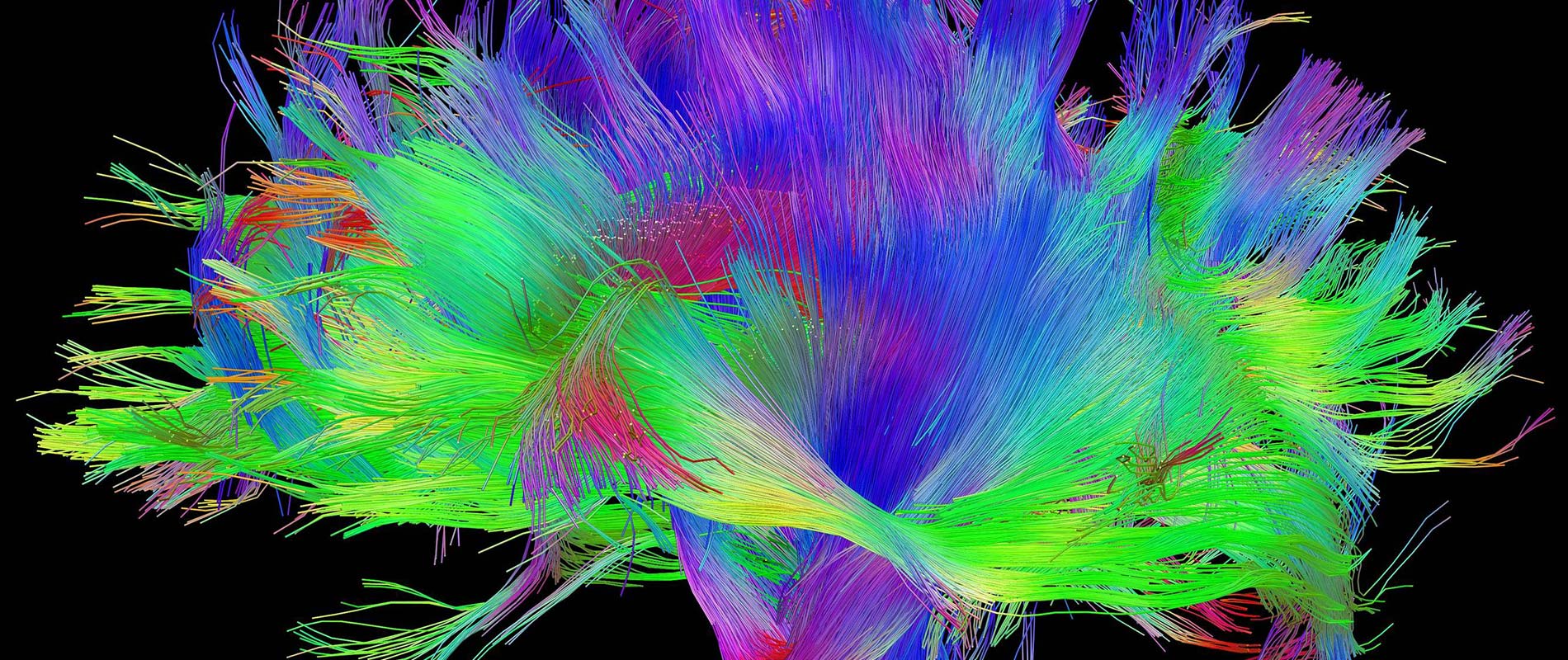Imagine cozying up on the couch to close out a long day of online lectures and asynchronous learning. A steaming cup of Organic Nighty Night tea with a splash of oat milk and a dash of cinnamon is winding seductive whiffs of ancient herbal grace towards your nasal passages and pulls you in. Souza’s Differential Diagnosis aches for you to begin reading, and the next thing you know your eyes are obediently marching the lines of your favorite textbook left to right, top to bottom, amazed at the secrets held within.

Sara Parsons
You take a sip of tea without lifting your gaze from the words on the page when suddenly you come to the realization that what you are reading is making no sense. In fact, you can’t remember what the last two paragraphs were about even though you are certain you have read every word. Knowing that there is no way the material in question could be to blame for disappearance of the last thirty seconds of your life, you curse the fickleness of short-term memory and begin reading the chapter again in the attempt to solidify the knowledge in your mind.
Memory is complicated. So complicated that even though Aristotle developed the blank slate theory at least 2000 years ago after pondering the mechanism of memory,1 and for the last century scientists have extensively researched memory accumulating massive amounts of knowledge in areas of “neuroanatomy, the molecular and cellular biology of synaptic change, and the organizations of brain systems”,2 there are still many differing theories floating around about how memory works. Luckily for us, and for the length of this article, “the notion of multiple memory systems is now widely accepted”,2 and there is one theory in particular that modern science has decided to hang its hat on: The Modal Model of Memory.1
The Modal Model states that memory is a distributed process that involves not one but many areas of the brain. It is a unique association of synaptic connections and sequence of patterned neuron signaling that give us the “ability to encode, store, retain, and subsequently recall information and past experiences”.1
There are three levels of memory storage with steps1 that must be taken in each level in order to move to the next, much like the advancement to the next level of a video game on a quest to gather information and allies in order to defeat the power hungry villain who somehow has grown to be three times normal size, how did he get that big? I digress.
Our adventure begins with sensory information being transmitted along afferent nerves to the sensory motor cortex, where it is perceived and stored for less than one second in the first level of memory formation: Sensory Memory. Here sensory information is briefly retained after the original stimulus is removed. If the brain gives more attention to the perception, the process of encoding begins. Encoding is regulated by the thalamus and the frontal lobe, and is the process in which perceived information is sent to the both the amygdala (to create sensation of the stimuli) and the hippocampus (for analyzation and association with similar memories that have already been stored).1
The hippocampus is critical in new memory formation, and is unique in that it can generate that aid in creating connections with established neural networks.3,4 There have been numerous studies showing the benefit of running on hippocampus plasticity.3,4,5 Activation of the muscle-spindle pathway and the vagus nerve pathway both activate the nucleus of the tractus solitaries (NTS) via the brainstem. The NTS in turn activates the locus coeruleus which has neural connections to the prefrontal cortex, the basolateral amygdala, and the CA1, CA3, and dentate gyrus of the hippocampus.4 The CA1 and CA3 regions of the hippocampus are major players in encoding memories and moderating retrieval of stored memories, respectfully. The dorsal dentate gyrus is responsible for sorting memories, and is the area where new neurons are formed.3 Running helps modulate both the proliferation and survival of new neurons.5 Higher fitness levels have been shown to increase the volume of the hippocampus and increase performance on memory tests.3 The end result of information processing in the amygdala and the hippocampus is the creation of an engram, a hypothetical “ideation” or conglomeration of information into a mental representation of the stimuli.1 From here we advance to level two: Short-term Memory.
Short-term memory is like that level in the video game that starts in the central market buzzing with the hustle and bustle of the townsfolk. It is the working memory, where the brain is both remembering the old and processing the new at the same time. There’s a lot happening here, but the excitement only lasts so long (around 10-15 seconds capacity in short-term) before your caricature has to move on and face the next challenge. The process of short-term memory is controlled by the central executive part of the pre-frontal cortex,1 an area where chiropractic care has been shown to effect neuroplastic changes. In a study conducted to elucidate which part of the brain is affected by by the removal of dysfunction of the spine using chiropractic adjustments, it was shown that the pre-frontal cortex is at the epicenter of impact, and that “the mechanism by which spinal manipulation improves performance are due to a change in function of the prefrontal cortex“.6 Further research is needed to show the effects this change in function has on memory specifically, but this study highlights the importance of removing dysfunction in the spine to allow efficient processing by the pre-frontal cortex, the very area of the brain that plays a major role in the temporary storage of engrams waiting to advance to the last and final level.
Consolidation is the process of stabilizing an engram from Short-term Memory into Long-term Memory via a process called long term potentiation. Long term potentiation is the strengthening of synaptic connections due to repeated synaptic firing between two neurons, “neurons that fire together, wire together.” Long term potentiation integrates an engram and stores it in the “groups of neurons primed to fire together in the same pattern that created the original experience”,1 successfully distributing the memory across different regions of the brain waiting to be called upon.
The day has been won, the villain has been defeated, and after going on a jog, getting adjusted, and finishing that delicious cup of bedtime tea, you have finally successfully processed and stored that Souza chapter on headaches. Ah, the wonders of memory.
Resources
- What It Is, How It Works & How It Can Go Wrong [Internet]. The Human Memory. [cited 2020 Apr 22]. Available from: https://human-memory.net/
- Squire, LR. Memory systems of the brain: A brief history and current perspective. Neurobiology of Learning and Memory [Internet]. 2004 Aug 4 [cited 2020 April 23]; 82:171-177. Available from https://www.ncbi.nlm.nih.gov/pubmed/15464402
- Cooper C, Moon HY, van Praag H. On the Run for Hippocampal Plasticity. Cold Spring Harb Perspect Med [Internet]. 2017 May 11 [accessed 2020 Apr 23]; 8:a029736. Available from https://perspectivesinmedicine.cshlp.org/content/early/2017/05/09/cshperspect.a029736
- Loprinzi PD, Ponce P, Frith E. Hypothesized mechanisms through which acute exercise influences episodic memory. Physiology International [Internet]. 2018 Nov 15 [accessed 2020 Apr 23]; 105(4):285-297. Available from https://akjournals.com/view/journals/2060/105/4/article-p285.xml
- Trivino-Paredes J, Patten AR, Gil-Mohapel J and others. The Effects of Hormones and Physical Exercise on Hippocampal Structural Plasticity. Frontiers in Neuroendocrinology [Internet]. 2016 Mar 8 [Accessed 2020 Apr 23]; 41:23-43. Available from https://www.ncbi.nlm.nih.gov/pubmed/26989000
- Lelic D, Niazi IK, Holt K and others. Manipulation of Dysfunctional Spinal Joints Affects Sensorimotor Integration in the Prefrontal Cortex: A Brain Source Localization Study. Neural Plasticity [Internet]. 2016 Mar 7 [Accessed 2020 Apr 24]. Available from https://www.hindawi.com/journals/np/2016/3704964/
This article first appeared in the April 2020 issue of Lifelines, the Life West student magazine.


